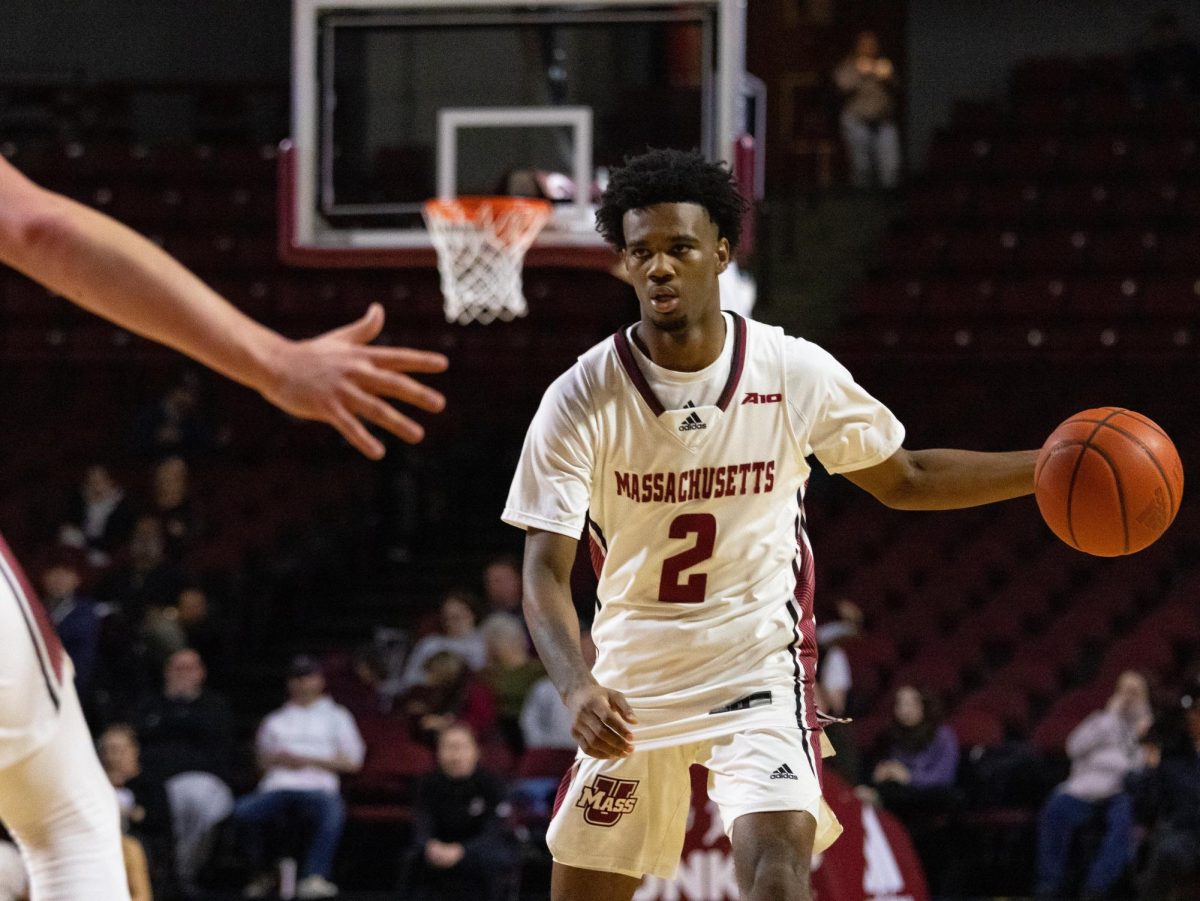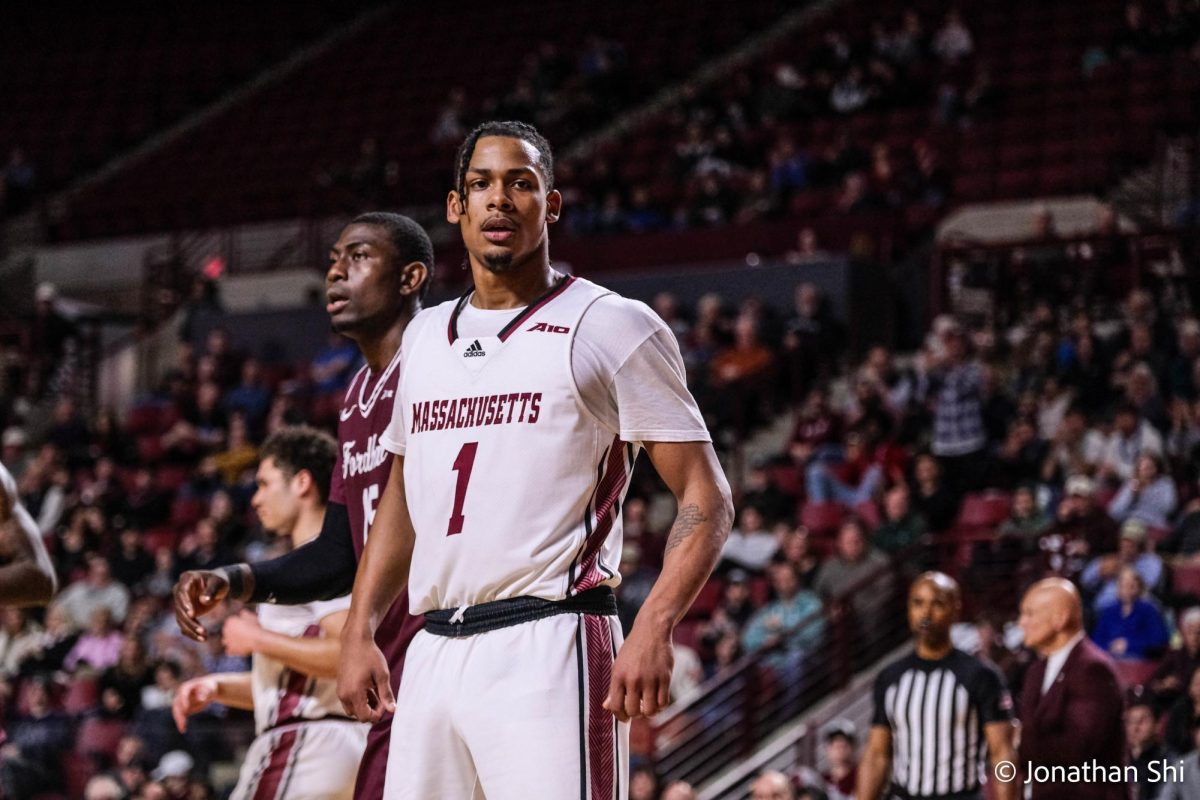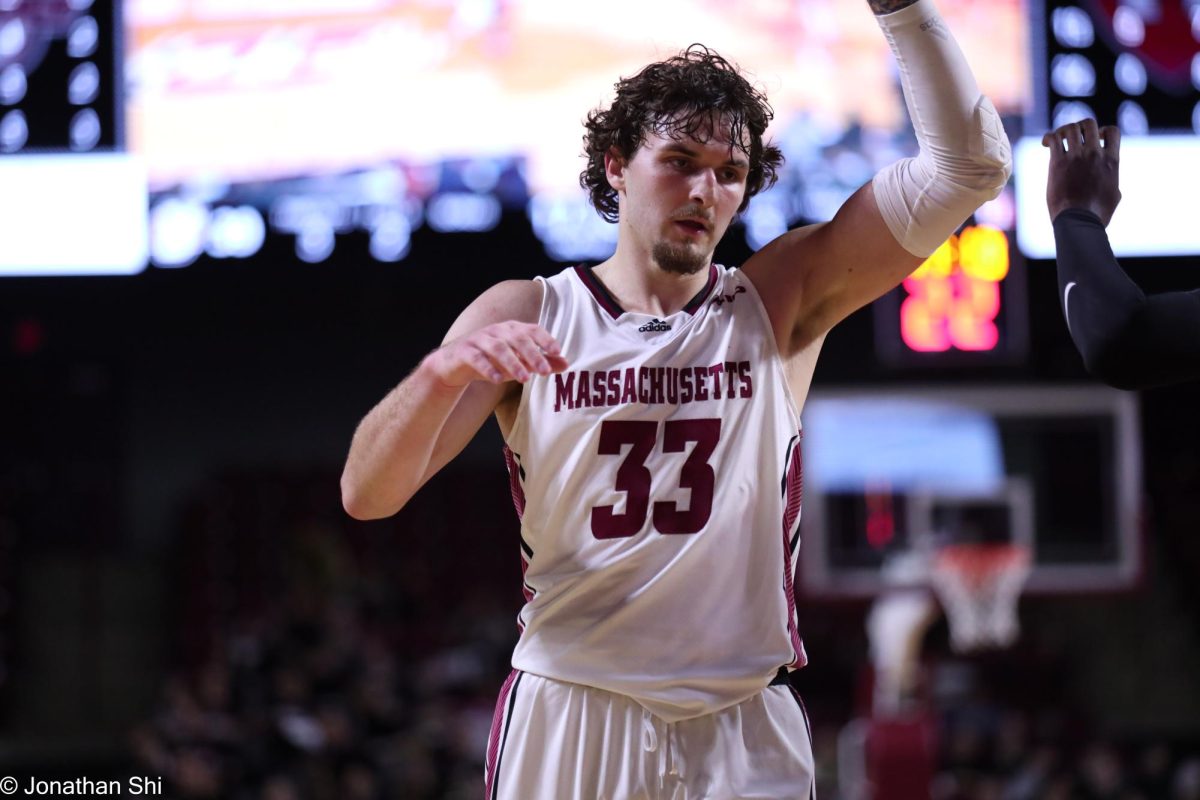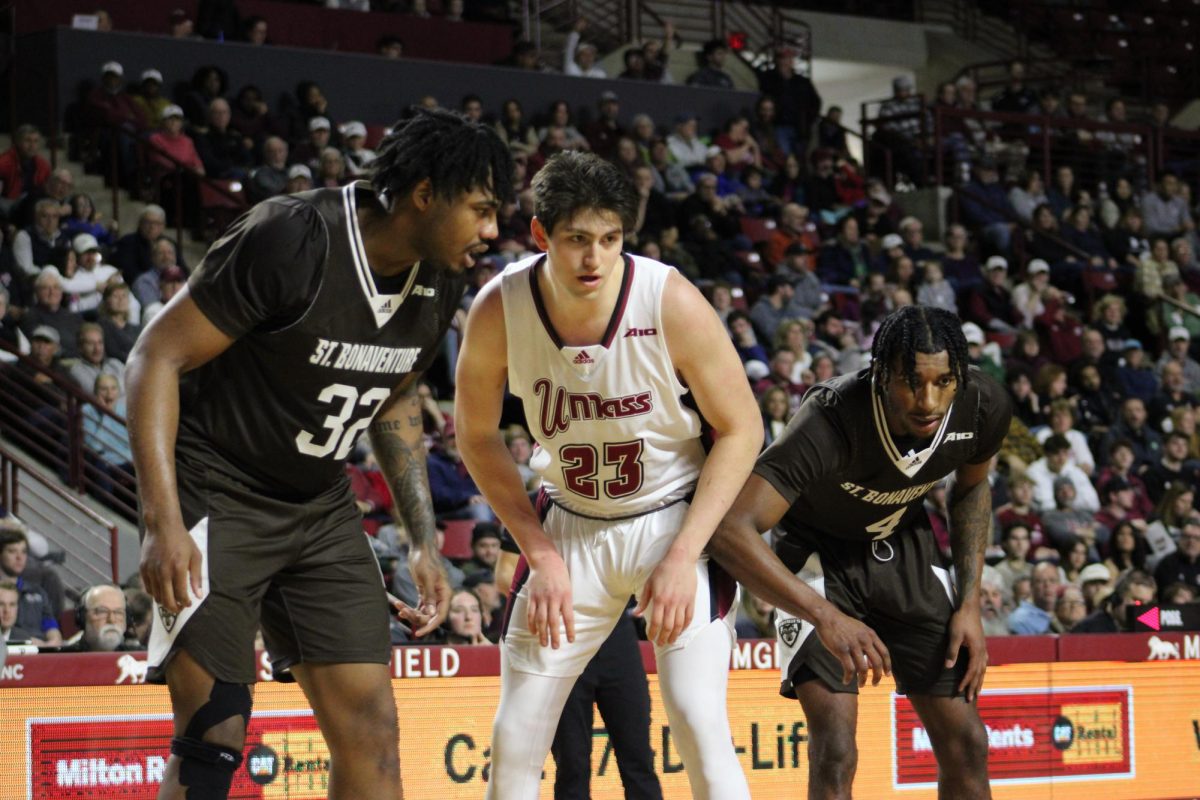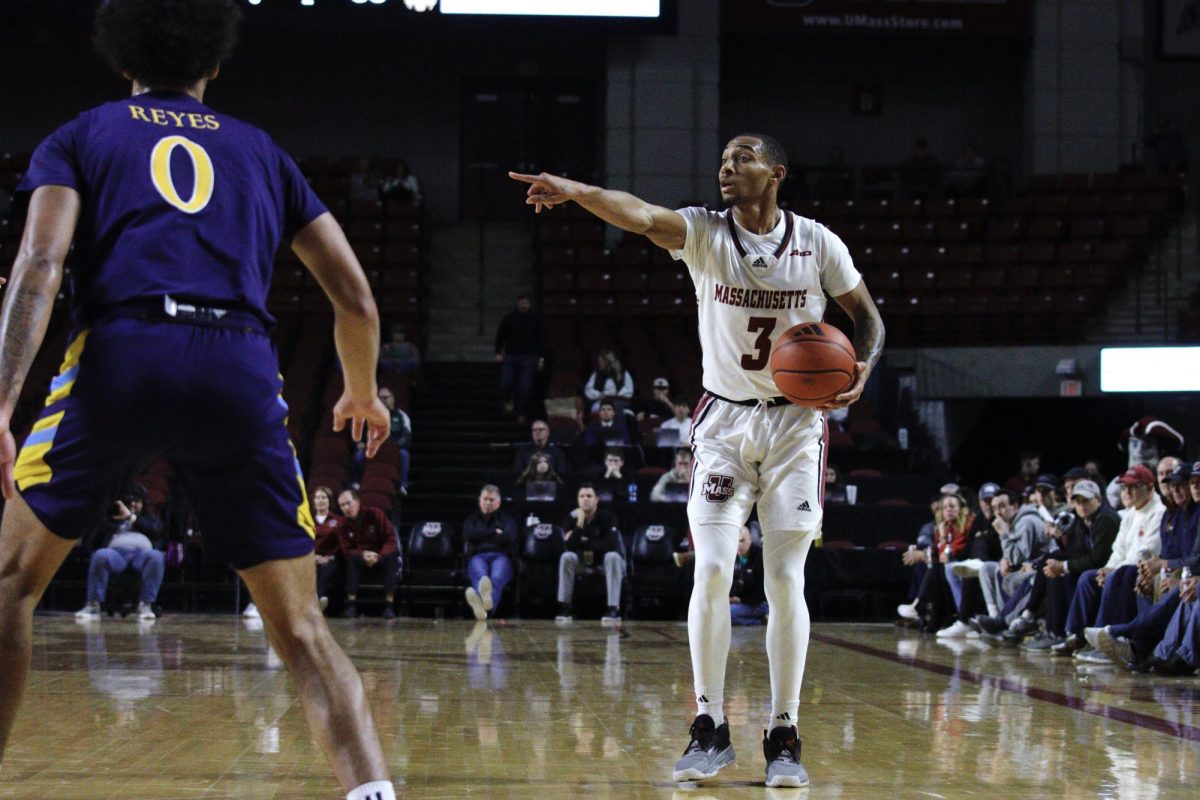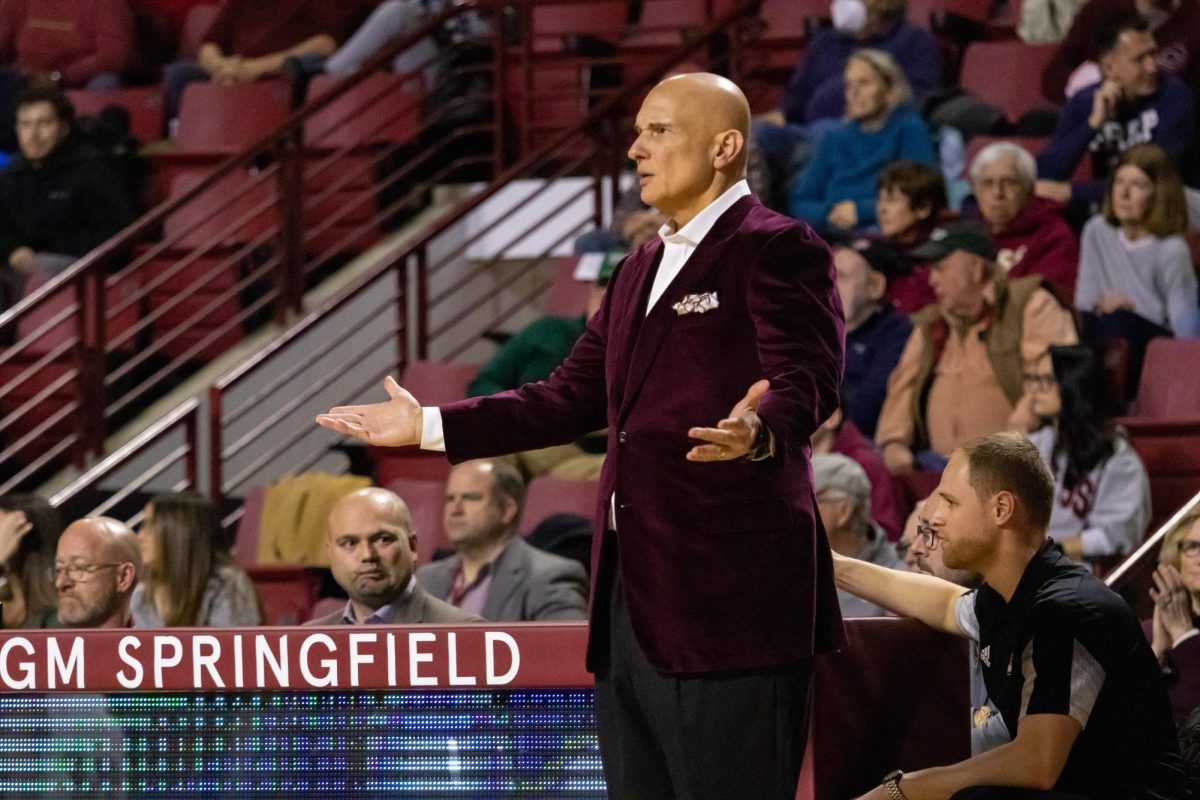
It’s going to take luck, and a lot of it.
It might even take a miracle.
With the Atlantic 10 regular season title well out of the picture for the Massachusetts men’s basketball team, the only rallying cry the Minutemen have left is to catch lightning in a bottle and go on a run at the Barclay’s Center in the A-10 tournament if they want to make a run at the postseason.
Prior to the start of Tuesday’s games – Richmond vs. Davidson and Rhode Island vs. Virginia Commonwealth – UMass (11-13, 4-8 A-10) currently sits at 10th in the conference standing. However, with the logjam that is the middle of the A-10, the Minutemen are just two games out of the sixth seed.
In its six games remaining in the regular season, UMass has three against opponents currently behind them in the A-10 – Fordham (Wednesday), George Mason (Feb. 21) and La Salle (March 5) – and another against URI, which the Minutemen beat 61-56 in overtime Feb. 2 at Mullins Center.
For a team that endured a seven-game losing streak not too long ago in conference play, the Minutemen are in prime position to make a move up the standings before they head to Brooklyn for the first round March 9.
Now I’m not guaranteeing that UMass will go on a run in the A-10 tournament, but I do feel more confident in this year’s team’s ability to get hot at Barclay’s than I did a year ago with the 2014-15 Minutemen.
The reason? UMass is now a guard-centric team led by Trey Davis (19.1 points per game), Donte Clark (17.6) and Jabarie Hinds (13.9), whereas a season ago the Minutemen’s two major pieces were center Cady Lalanne (11.6) and forward Maxie Esho (11.3) in the front court.
UMass coach Derek Kellogg’s dribble-drive offense is a system that relies heavily on its guard play to penetrate the defense for drive-and-kick opportunities. With a high ball screen set at the top of the key, the guards then attack downhill to the paint where they can either look to score, kick out to a wing if their defender collapses to clog the lane, or dump off to a cutting forward or center or an easy layup.
It’s an offense that operates and performs better when its guards are creating opportunities. A season ago the Minutemen averaged 69.4 points per game with their best players being in the front court, where this season UMass has seen a slight right in points to 75.9 ppg with Clark, Davis and Hinds each already surpassing their shot total from all of last year.
Moving Hinds out of the starting rotation and into the sixth-man role was one of Kellogg’s best moves of the season. I like Hinds’ energy off the bench, and despite not starting he has still played in at least 30 minutes three of the past four games. In the past two games Hinds has looked like he did earlier in the season when he averaged 20 ppg over UMass’ first six games, leading it to a 5-1 record.
Hinds’ play is going to be the key for the Minutemen if they want to make a run in the A-10 tournament. Hinds has been arguably UMass’ best player in its last two games including a career-high 37 points in an overtime win at Duquesne this past Sunday and a 7-for-10 shooting performance in the 69-63 win against Virginia Commonwealth on Feb. 11.
When Hinds is playing to his full potential, the Minutemen are a different team, as they are now 8-0 when Hinds scores at least 17 points.
“I watched (former UConn stars) Shabazz Napier and Kemba Walker, they were eighth in the conference and came back and won a national championship. Those are the things that I look at,” Davis said following UMass’ 86-74 loss against Davidson back on Jan. 16.
It’s going to take a lot for UMass to go on a run in Brooklyn. Two, if not all three of its guards are going to have to play well and a lot of 3-point shots are going to have to fall if it wants any shot at success, but in a season that’s been full of dull moments, maybe the Minutemen can gain some momentum before the end of the season.
Stranger things have happened in college basketball.
Andrew Cyr can be reached at [email protected], and followed on Twitter @Andrew_Cyr.







